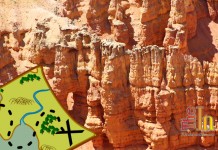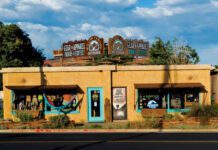 Utah Tribes Exhibit features rare 19th-century photos of southwest American Indians
Utah Tribes Exhibit features rare 19th-century photos of southwest American Indians
By Brynne Sloan
A special exhibit of 116 rare albumen photographs of American Indians taken in Utah and Colorado between 1872 and 1875 will open March 15 at the historic Maynard Dixon Home in Mt. Carmel. The Utah Tribes Exhibit, owned by the Thunderbird Foundation for the Arts, is an extraordinary collection of images by John (Jack) Hillers, one of the most important American photographers of the 19th century. Hillers produced several sets to be used by John Wesley Powell to lobby Congress for more money for his expeditions.
“We bought the collection in 1999 for the purpose of reselling the images one at a time,” said Paul Bingham, CEO and co-founder of Thunderbird Foundation for the Arts. “After we were able to review the magnitude of the collection, we determined it was the only known full group of 116 albumen photographs that existed outside the Smithsonian and needed to be saved as such. We are pleased to make them available for public viewing.”
Among the annals of the exploration of the West, few stories rival that of Powell’s heroic exploration of the Colorado River. Powell handpicked 11 original crew members including official photographer E.O. Beaman of New York and Hillers, whom Powell had met by coincidence in Salt Lake City and signed on to “pull an oar.”
Hillers became Beaman’s unofficial assistant, helping move and set up his photography equipment that weighed roughly a thousand pounds and included a large camera, a portable dark room, tripods, and large, very fragile glass plates used to make photo negatives using the wet-plate collodion method. Beaman’s historic photographs were to become the first images ever taken of the Green and upper Colorado Rivers. Having survived canyons such as Desolation, Labyrinth, and Cataract, aptly named by Powell, the group left the river to winter in Kanab. Beaman left the survey in January 1872 after a dispute with Powell.
Powell then put Hillers in charge of photography for the remainder of the expedition. Hillers would go on to work for the U.S. Geological Survey for the next 30 years as a photographer. He was especially interested in portraits of American Indians and worked for the Department of Ethnography under Powell’s direction to document indigenous peoples before their way of life disappeared.
According to Utah photography historian, Nelson Wadsworth, Powell had a long association of mutual trust with the Kaibab Paiutes, fostered in 1872 by Powell and southern Utah Mormon leader Jacob Hamblin, the so-called “buckskin apostle.” This opened access to Hillers’ cameras, resulting in many of the pictures in the Utah Tribes Exhibit.
The Utah Tribes Exhibit is open to visitors by appointment only from 10 a.m. to 5 p.m. daily March 15–Nov. 15 at the Thunderbird Foundation Headquarters, located at 2200 S. State St. in Mt. Carmel. Tickets are $5 per person and are available for purchase online.
Articles related to “Utah Tribes Exhibit features rare 19th-century photos of southwest American Indians”
Native Americans call on the State of Utah to elevate tribes



